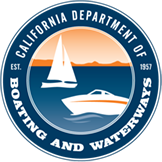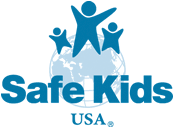Life Jackets
Of the boating fatalities that occurred in 2009, 67 percent of the victims drowned. Of that group, 84 percent were not wearing a life jacket. Don't become a statistic, wear a life jacket. Life jackets are the proven number one way to save a life in the event of a sudden, unexpected capsizing or fall overboard. Wear a life jacket. Please use this page as a resource for life jacket information.
- Life Jackets and the Law
- What type of Life Jacket?
- Choose the Right Jacket
- Where can I borrow a Life Jacket?
- Safety Alert from USCG concerning a Type I PFD
- Mustang Survival PFD Recall Notice
Life Jackets and the Law
For a boat less than 16 feet long, or a canoe or a kayak of any length, you are required to:
- Everyone on board a personal watercraft (popularly known as “jet skis”) and anyone being towed behind a vessel must wear a Coast Guard-approved life jacket.
- A Coast Guard-approved life jacket must be carried for each person on board. If stored, these life jackets must be readily available (easy to get to), and you must show passengers the location of life jackets and other safety equipment.
- Anyone using an underwater maneuvering device is exempt from wearing a life jacket. An underwater maneuvering device is any towed or self-powered device designed for underwater use that a person can pilot through diving, turning and surfacing moves.
For a boat 16 feet or longer, you must carry for each passenger:
- The same requirements as above and one immediately accessible (easy-to-reach) Type IV device designed for throwing – such as a ring, cushion or horseshoe buoy for each boat.
What type of life jacket should you wear?
Unlike the traditional orange horse collar of yesteryears, today’s life jackets are technologically advanced, making them more convenient, less restrictive - and sometimes - even unnoticeable to the boater who is wearing one. An additional advantage to boaters is that life jackets are now custom designed for their specific water activities, i.e. fishing, cruising, water-skiing, etc. Click here for information on what kind of life jacket you should wear.
How to Choose the Right Life Jacket
Looking for a life jacket? Today’s jackets come in a variety of shapes, sizes, colors, and materials. No matter which life jacket you choose, be sure it’s right for YOU, your planned activities, and the water conditions you expect to encounter.
Try It On
- Check the manufacturer’s ratings for your size and weight.
- Make sure the jacket is properly zipped or buckled.
- Raise your arms straight up over your head while wearing your life jacket and ask a friend to grasp the tops of the arm openings, gently pulling up.
- If there is excess room above the openings and the jacket rides up over your chin or face, it does NOT fit properly. A snug fit in these areas signals a properly fitting life jacket.
Fit Facts
- It is extremely important that you choose a properly fitting life jacket.
- Jackets that are too big will cause the flotation device to push up around your face, which could be dangerous.
- Jackets that are too small will not be able to keep your body afloat.
Important Reminders
- Make sure your life jacket is U.S. Coast Guard-approved.
- Double check that your jacket is appropriate for your favorite boating activities.
- Take the time to ensure a proper fit.
- Life jackets meant for adults do not work for children. If you are boating with children, make sure they are wearing properly fitted, child-sized life jackets.
- On recreational vessels underway, children under 13 years old must wear a Coast Guard approved life jacket unless they are below decks or in an enclosed cabin.






